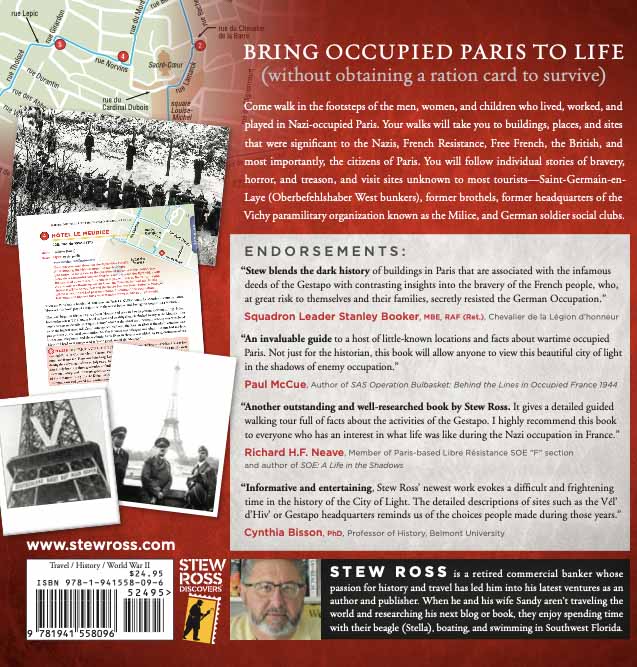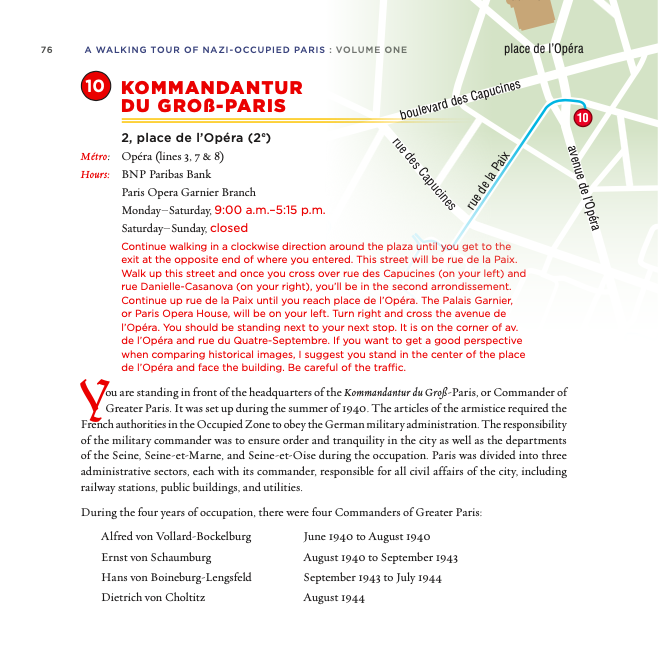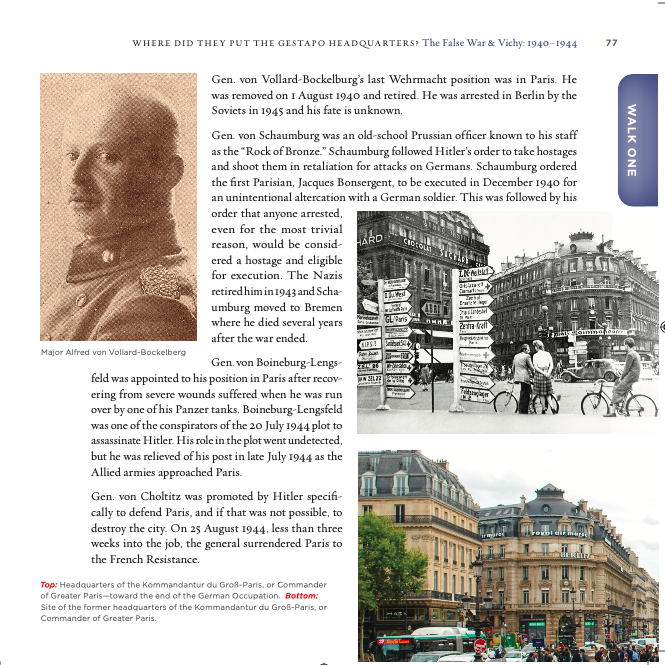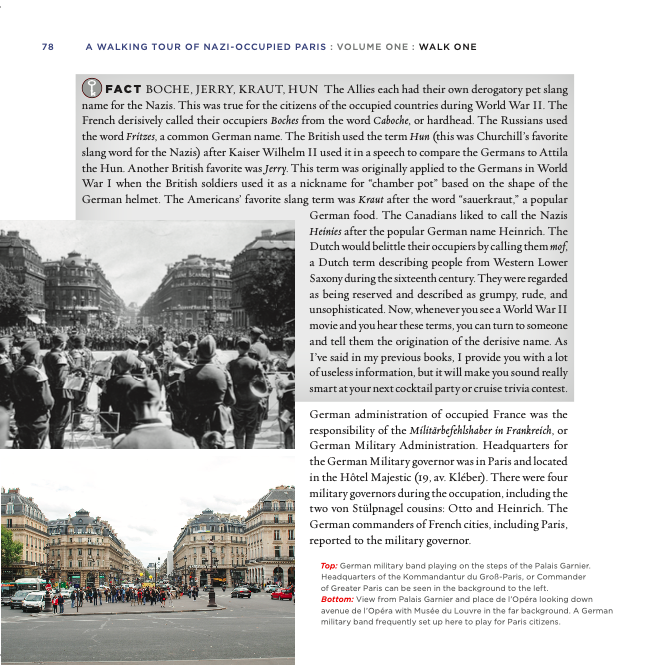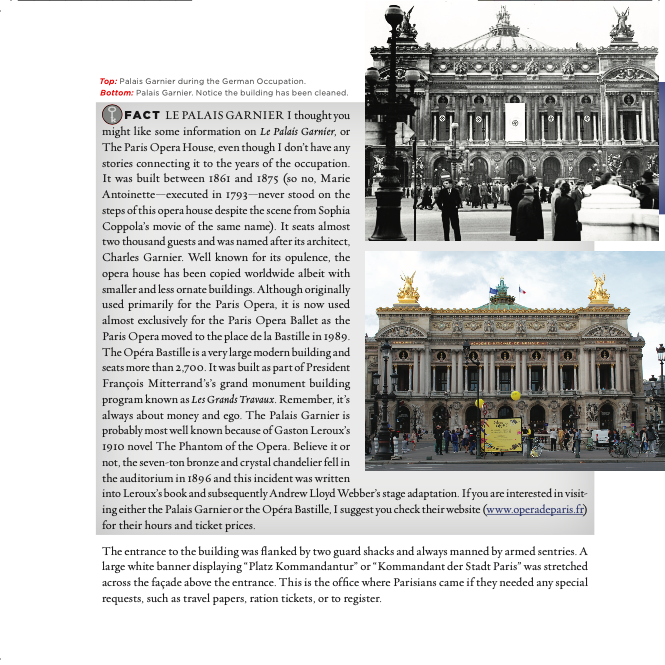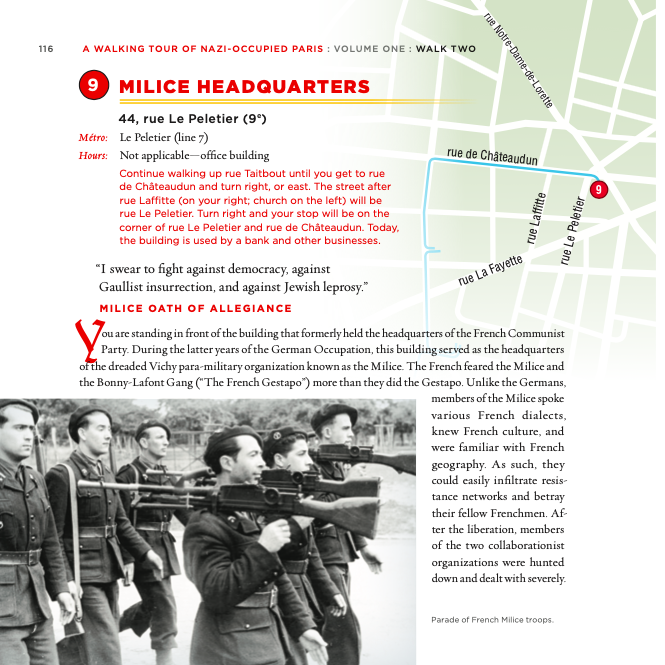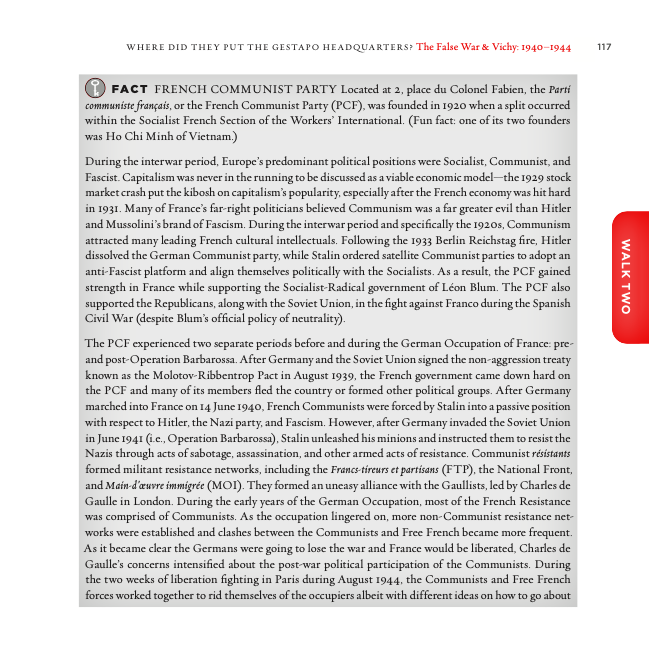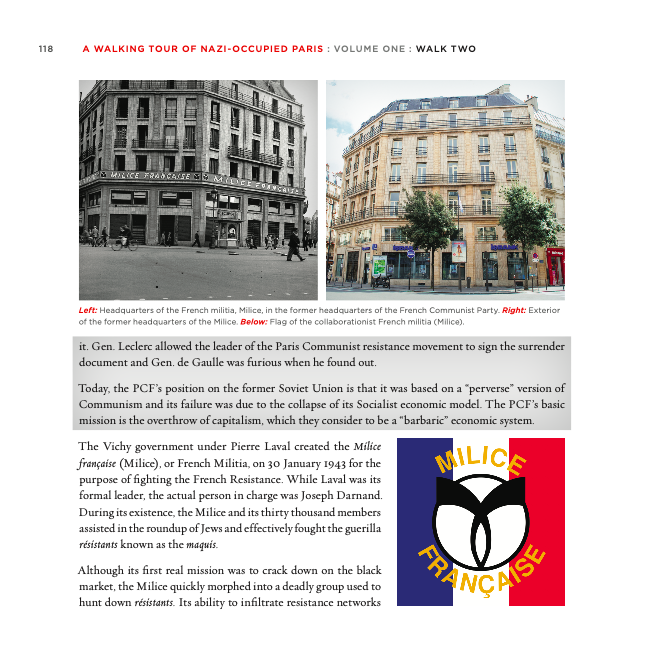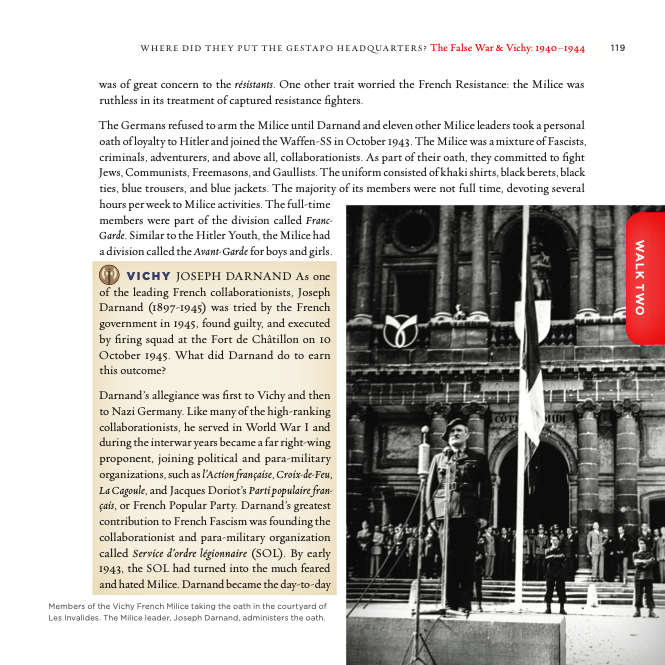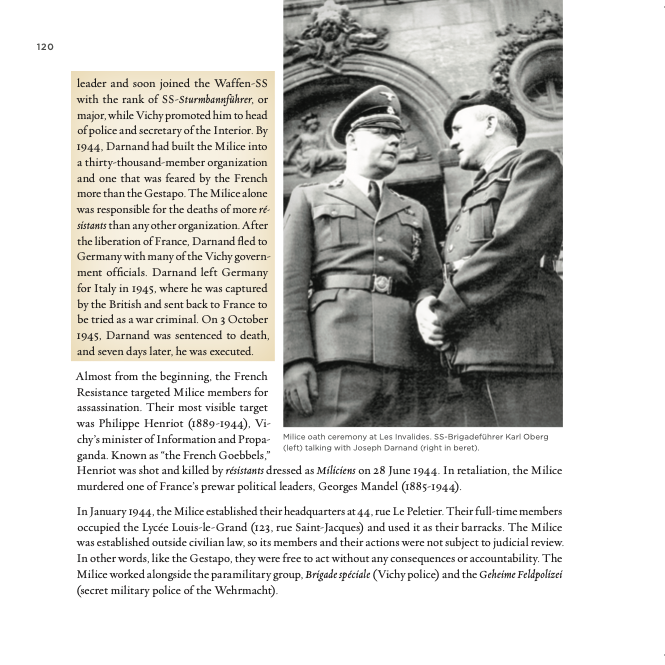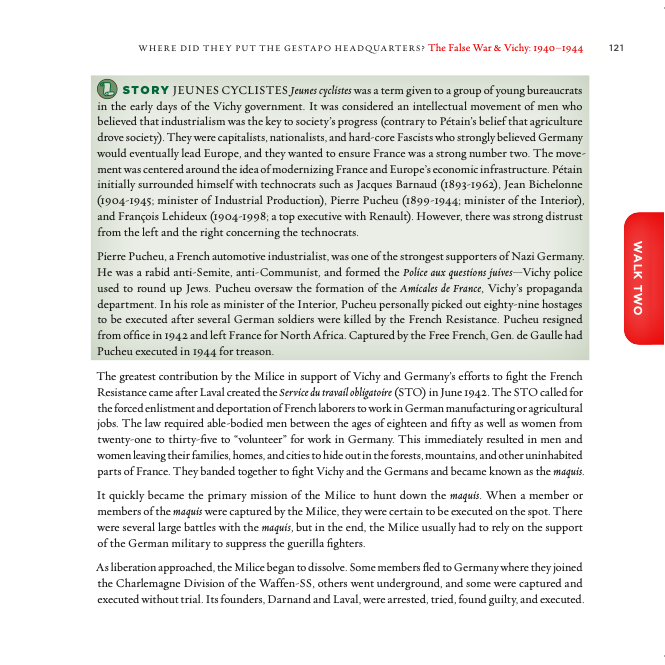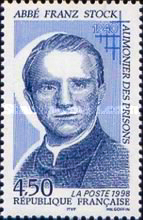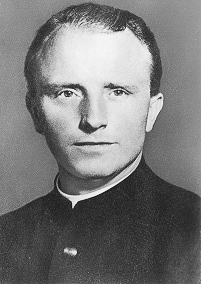Volume One Available Now!
Our new book, Where Did They Put the Gestapo Headquarters? A Walking Tour of Nazi-Occupied Paris, is available for sale direct from Stew and Yooper Publications.
The price of the book is $24.95. All books sold directly will be autographed with a personal message. Sales tax will be covered by Yooper Publications.
For our domestic subscribers, we’ll pay the postage. For our international subscribers (and non-subscribers), the cost of postage will be added to the cost of the book.
If you would like to own and read our new book, please contact Sandy directly at sandy.ross@yooperpublications.com. Your review of the book on Amazon would be greatly appreciated (click here).
This is the first of three volumes on the occupation of Paris. I hope you enjoy the following preview of the book.
The False War & Vichy, 1940-1944
BRING OCCUPIED PARIS TO LIFE
(without obtaining a ration card to survive)
Come walk in the footsteps of the men, women, and children who lived, worked, and died in Nazi-occupied Paris. Your walks will take you to buildings, places, and sites that were significant to the Nazis, French Resistance, Free French, the British, and most importantly, the citizens of Paris.
“Maybe I’ll protect it; maybe I won’t. It’s up to me.”
Adolf Hitler
(to Albert Speer on the fate of Paris sometime during their three-hour tour of Paris on the morning of 28 June 1940)
Although World War II and the German occupation of Paris occurred more than 75 years ago, these historical events are still fresh in our minds. France spent almost 40 years denying its role in the collaboration with the Nazis and in particular, the arrests and deportations of the French Jewish population. While the German occupation of Paris started out rather benignly in June 1940, within two years the city and its citizens were firmly in the grip of the tightening Nazi vise.
CONTENTS
WALK ONE (Vichy France)
Louis Darquier de Pellepoix to the Kommandantur du Groß -Paris
WALK TWO (PARIS BY NIGHT)
Cabaret le Shéhérazade to the Milice Headquarters
WALK THREE (SOLDIERS ON LEAVE)
Montmartre: UGIF to the Moulin Rouge
METRO WALKS (OTHER SITES TO VISIT)
Sample Stops
WALK ONE STOP 10
WALK TWO STOP 9
Testimonials
“Stew blends the dark history of buildings in Paris that are associated with the infamous deeds of the Gestapo with contrasting insights into the bravery of the French people, who, at great risk to themselves and their families, secretly resisted the German Occupation.”
⏤Squadron Leader Stanley Booker, MBE, RAF (Ret.), Chevalier de la Légion d’honneur, Member: KLB Club
“An invaluable guide to a host of little-known locations and facts about wartime occupied Paris. Not just for the historian, this book will allow anyone to view this beautiful city of light in the shadows of enemy occupation.”
⏤Paul McCue
Historian, lecturer, and author of SAS Operation Bulbasket: Behind the Lines in Occupied France 1944
“Guidebooks are usually described as informative, sometimes entertaining and Stew Ross’ newest work is both. It is also more⏤it evokes a difficult and frightening time in the history of the City of Light. The detailed descriptions of sites such as the Vél’ d’Hiv’ or Gestapo headquarters as well as the home of glamorous traitors such as Coco Chanel reminds us of the choices people made during those years. Even more interesting is how Paris did its best to remain a capital of pleasure as nightclubs and cabarets remained open to the mainly German audience.”
⏤Cynthia Bisson, PhD
Professor of History, Belmont University
French Resistance Expert
“Another outstanding, well-researched, and presented book by Stew Ross. It gives a detailed guided walking tour full of facts about the activities of the Gestapo during their occupation of Paris during World War II. I highly recommend this book to everyone who has an interest in what life was like during the Nazi occupation in France.”
⏤Richard H.F. Neave
Member of Paris-based Libre Résistance SOE “F” section and author of SOE: A Life in the Shadows”
Walks Through History 
Copyright © 2022 Stew Ross


